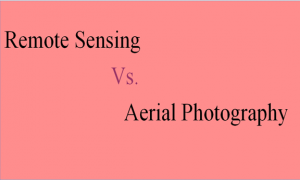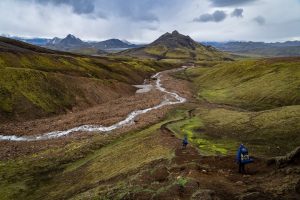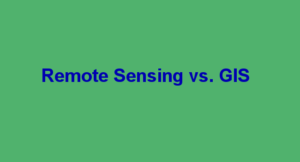Remote sensing imagery always covers a large geographical area with high temporal frequency. To easily understand and derive land use and land cover information, there is always a need to process image interpretation and classification. The image pixel has been employed as the basic unit of analysis since the early 1980s.
Therefore, Image classification is the process of assigning land cover classes to pixels. In remote sensing, photographic images are grouped into different classifications. These classifications are grouped into three;
Manual Classification
Pixel Based Classification
- Supervised image classification
- Unsupervised image classification
Feature or object-based image classification
The supervised and unsupervised image classification techniques are considered the major categories. Supervised is mainly a human-guided classification. In contrast, unsupervised classification is calculated by the software.
1. Manual classification
Manual classification refers to the interpretation and classification of remote sensing images by the human eye. Before technological advancement, it was the primary method that was used in classifying images. In the era of digitization, the manual method has integrated with computer use. It is more reliable when dealing with small geographical land covers.
2. Pixel Based Classification
Pixel-based classification is further divided into two
Supervised image classification
As stated above, supervised imagery is mainly a human-guided classification. Human image analysts play a crucial role. They specify the multispectral reflection emittance values of each land cover class or land use. In short, the analysts will supervise the pixel classification process through three stages; training, allocation, and testing.
Training is where the analysts get to identify a sample of pixels of a known class membership gathered from referenced data. Such data may include aerial photographs or existing maps. The training pixels are used to derive various statistics for each land cover class. In the allocation stage, images are classified and allocated to the classes in which they show the greatest similarities based on the statistics results. Lastly, in the testing stage, a group of testing pixels is selected, and the different class identities compared. Comparison is based on the reference data and spectral properties of each pixel in the image. The results are based on an error matrix depending on the agreements and disagreements of the test samples. On completion of the three stages, an analyst can evaluate the image classification for each land cover class.
Apart from this, a large number of supervised classification methods have been developed. These algorithms include;
- Maximum Likelihood Classifier
- Minimum Distance-to-means Classifier
- Mahalanobis Distance Classifier
- K-Nearest Neighbors Classifier
- Support Vector Machine
Unsupervised Image Classification
Unsupervised classification is where the groupings of pixels with common characteristics are based on software analysis of an image without the user defining training fields for each land cover class. All this is done without the help of training data or prior knowledge. The image analyst’s responsibility is to determine the correspondences between the spectral classes that the algorithm defines.
In unsupervised classification, there are two basic steps to follow. These include; generate clusters and assigning classes. Using the remote sensing software, an analyst will first create clusters and identify the number of groups to generate. After this, they assign land cover classes to each cluster. All this is made possible by the use of algorithms such as;
- K-means
- Iterative Self-Organizing Data Analysis (ISODATA)
3. Object-Based Image Classification
This type of image classification employs the use of geographical objects as the basic unit of analysis. Object-based methods generate image objects by segmenting images and conducting classification on the objects rather than pixels. These images are formed and classified using different methods. These are; spatial, spectral, textural, and geographical contextual information of the photograph.
Examples of object-based algorithm classifiers include;
- Image segmentation
- Object-based image analysis techniques that include E-cognition and Arc GIS Feature Analyst



